Discover four exciting urban, cultural and natural gems on the menu of this all-around holiday haven.
The Compelling Capital – Seoul
A cultural concoction, murmuring metropolis, or the polished face of Korea’s modernity; Seoul can be described exclusively in superlatives. Before setting foot on the humming lanes in central Seoul, perfectly prepare your inner foodie with gastronomical treats at Michelin star-crowned Gaon – a restaurant that dishes refined Korean cuisine with delicacies including the traditional semi-sweet Korean melon, smoked eel, and sea urchin. Before kissing this exquisite restaurant goodbye, enjoy some carrot ice-cream and buckwheat tea.
For a glimpse of Seoul’s splendid skyline, hop on the Han River Water Taxi for a private daytime or romantic moonlight cruise where you will enjoy gazing upon the Banpo Bridge Rainbow Fountain with your loved ones.
Seeking for the soul of South Korea’s most populated agglomeration means going back in time, to Seoul’s Gyeongbokgung Palace. Perfect for history and architecture buffs, this 14th-century jewel gives a window into the life of royal Koreans during the Joseon dynasty. After wandering through this living history book, ease the muscles at Sulwhasoo Spa. Scrub and steam your worries and body aches away during a thoroughly indulging wellness treatment.
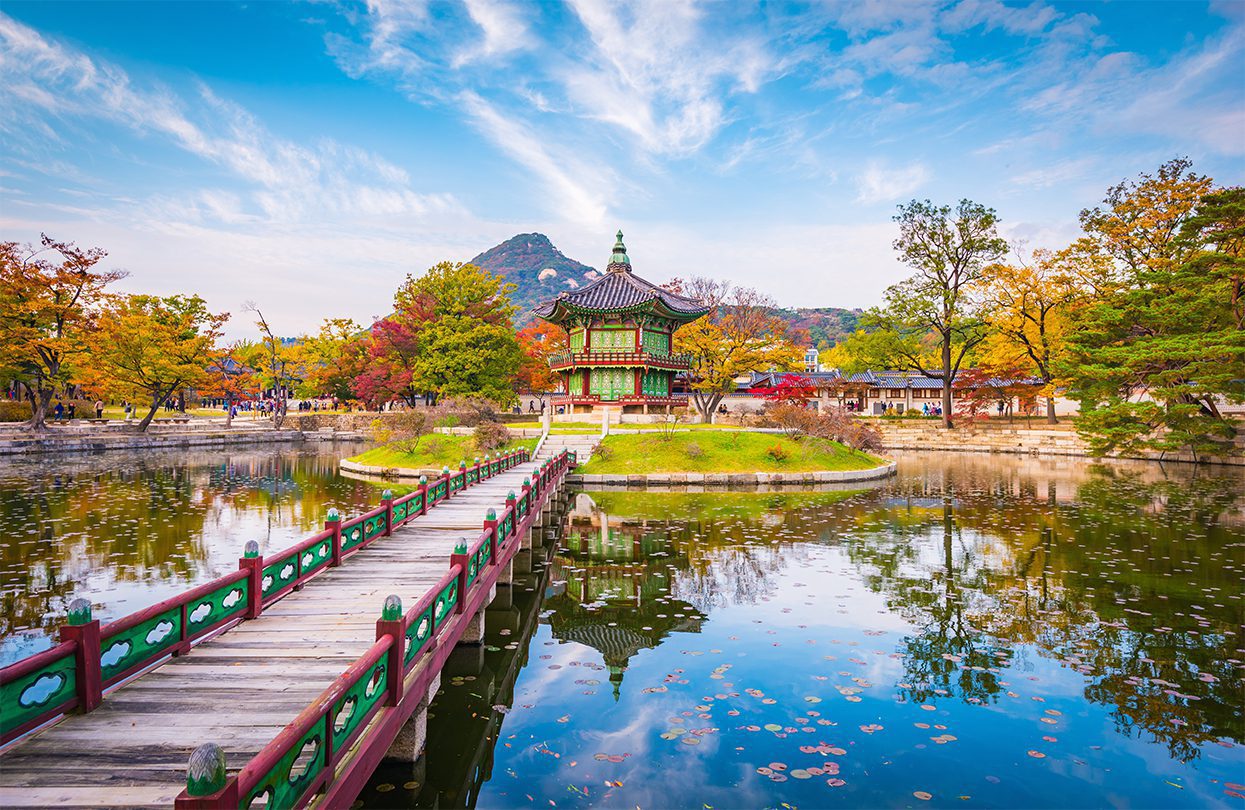
Gyeongbokgung Palace bathing in autumn colours, By CJ Nattanai
A Multi-Coloured Metropolis – Busan
A once modest trading town, grown exponentially by the fishing industry and hard harbour labour, Busan nowadays has taken its place onto the list of sophisticated travel destinations in South Korea. Temples, first-class eateries, shops, and vibrant markets provide for an appealing weekend getaway on the Korean coast. Get the caffeine flowing and the holidays going at Sinki Industry Café, an elevated coffee shop with modern factory vibes and scenic vistas of Busan’s port.
Thrill seekers who ascend Busan Tower can enjoy even more panoramic views. From the stunning view deck at the height of 120 meters, the city’s skyscrapers, bays, and surrounding mountains are at your feet.
Busan is well-known for its abundant seafood. So enjoy a stroll over the Jagalchi Fish Market and be sure to check out the restaurant section in the majestic main building. Point at living sea creatures, lean back while the chefs expertly prepare your pick, and feast on the freshest seafood you’ll possibly eat in South Korea. To burn off some of those seafood calories, trek hilly Oryukdo Island, a rocky archipelago, only a ferry ride away from the bustling city. Charming Busan’s unmatched culinary experiences are a great way to absorb the many cultural faces of South Korea. Busan can be reached from Seoul in less than 3 hours by high-speed train. A one-way ticket sets you back 50 USD.
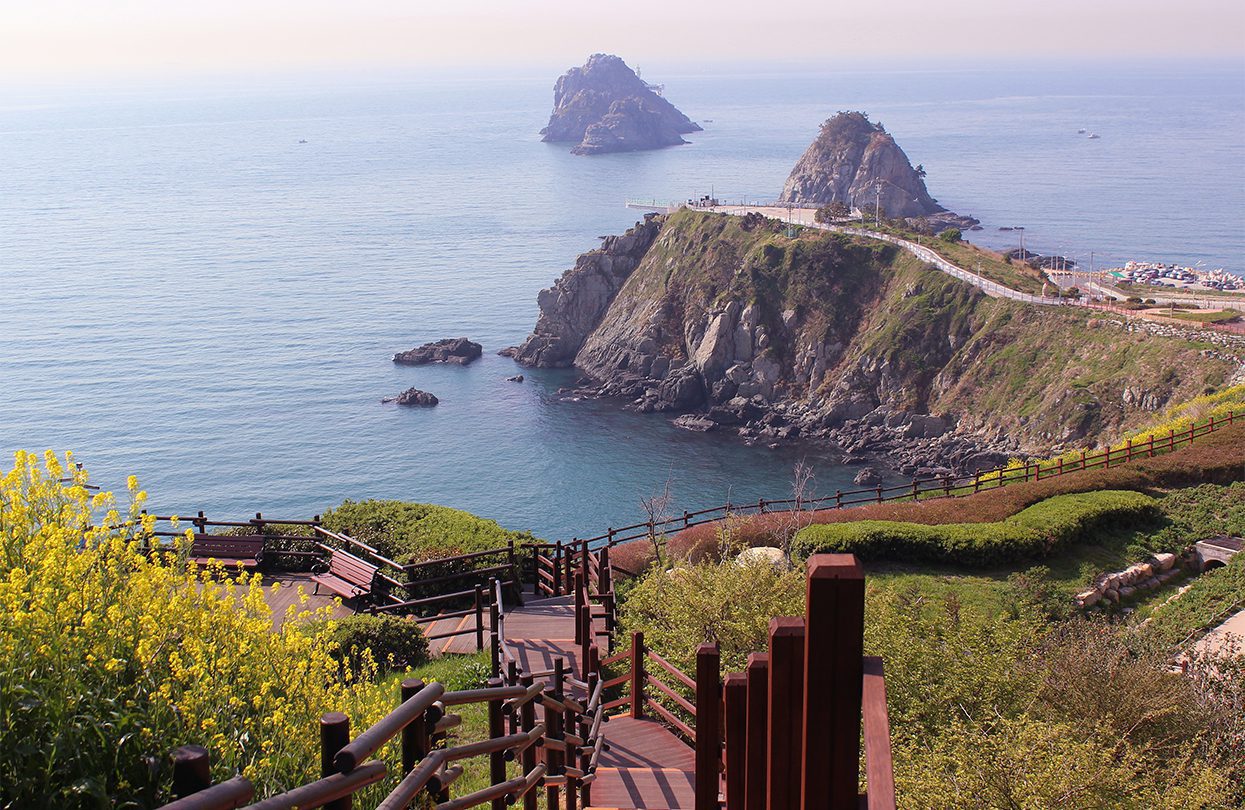
Aerial view of Oryukdo sunrise coastal walk along Igidae trail in Busan, By View_Point
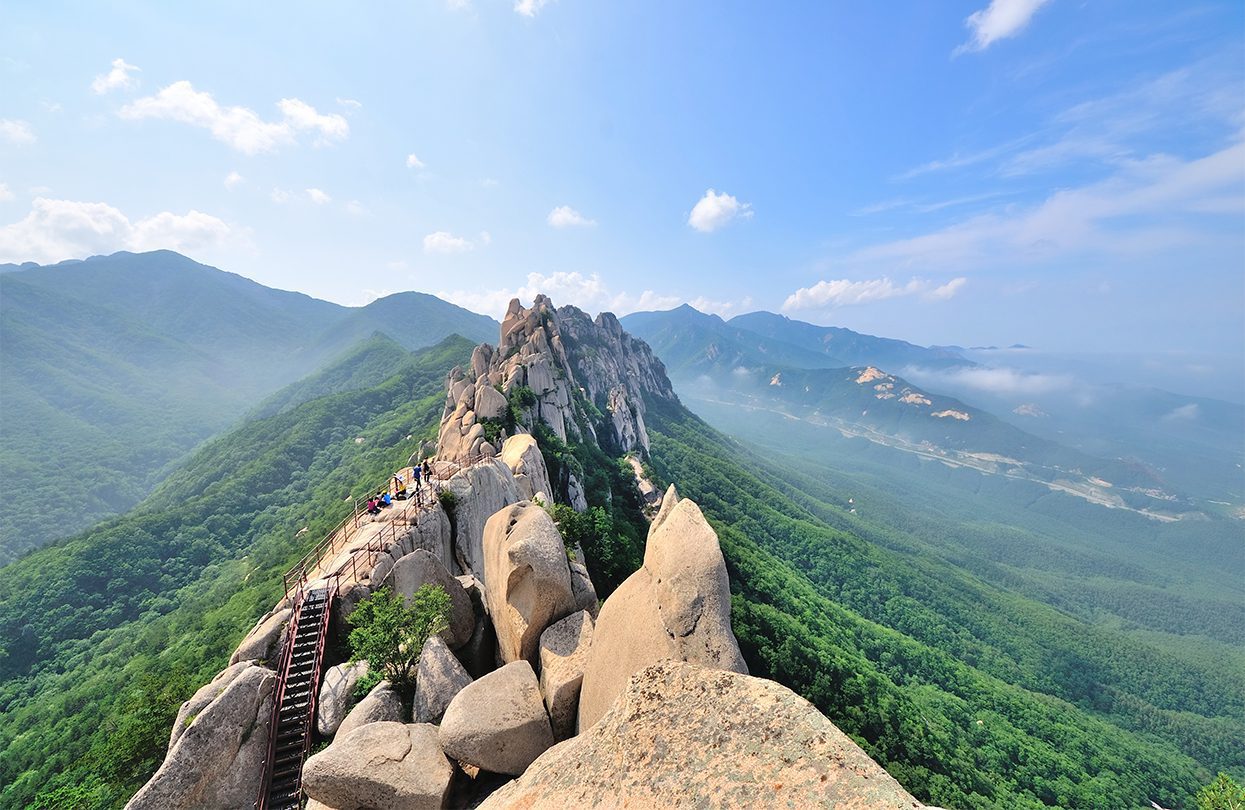
Ulsanbaw i-rock is a rock formation in the Seoraksan National Park, By dah_ken
The Monumental Mountain – Seoraksan National Park
Most of South Korea’s land area is dotted with hills and mountain ridges, occupied by pine forests and teeming with a stunning array of wildlife. Situated more than 200 kilometres east of Seoul, lies a nature reserve that’s a galaxy away from Korea’s major urban areas in every way.
Pointy peaks, rugged trails, and overwhelming silence are just some of the gifts that greet guests at the Seoraksan National Park. While hiking in stillness is what draws most of the public, the cable car ride to the summit of Mount Seoraksan is a fun, more conventional way to enjoy the national park’s unique, natural beauty. Native woodlands carpet sharp slopes that stretch farther than the eye can see. Inside the park, it’s not solely nature that shines. The lush Naksansa Temple is a spiritual sight of great significance. A graceful complex, the temple was built over 1300 years ago during the mighty Silla Kingdom. From Seoul, Seoraksan can be reached by car or a 5-hour bus ride, with a stopover in Sokcho costing US$15.
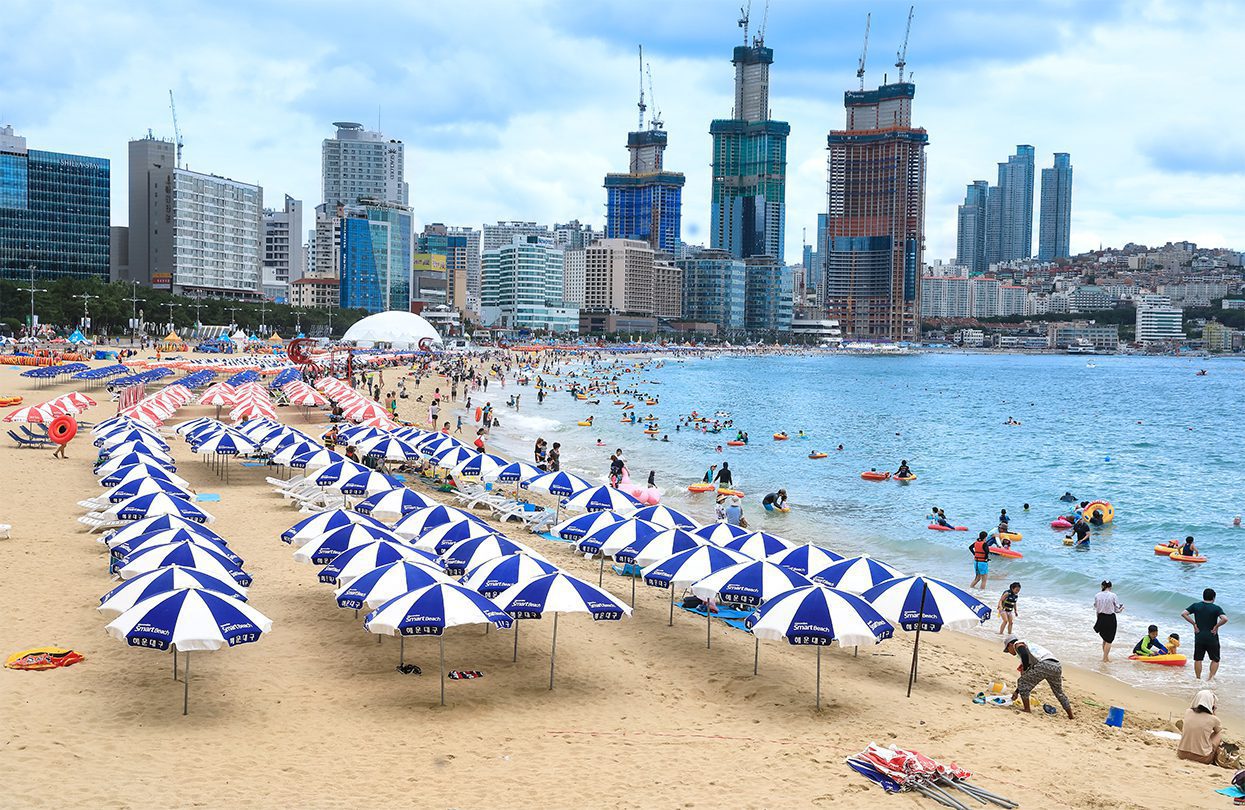
Haeundae beach Busan, By redstrap
An Amusing Time In The Sun – Haeundae Beach
Sheltered from the ocean waves, Haeundae Beach is a haven for beach buffs, an appealing spot to take a swim, and without a doubt Busan’s premier venue to soak up some rays. Haeundae stretches over a modest 1.5 kilometre, but despite its size, locals savour the pleasure of having an urban beach in close proximity. Spoil yourself, pick up a towel, and head to the Bay 101 Yacht Club. In addition to fun sports such as surfing and kiteboarding, this centre offers private voyages on their grand yachts, including dining and night cruises.
Water sports and sea breezes might wake up an appetite. Don’t worry, Haeundae Food Market is right around the corner and will have foodies and beachgoers fed fabulously.
Curiosity about the creatures of the deep can be quenched at nearby Sealife Busan Aquarium. See stingrays swim by, as their elegant wings ripple in the currents. Take a walk through the ocean within a plexiglass aquarium tunnel where you will see turtles gently swimming, embraced by the sea while sharks circle above.
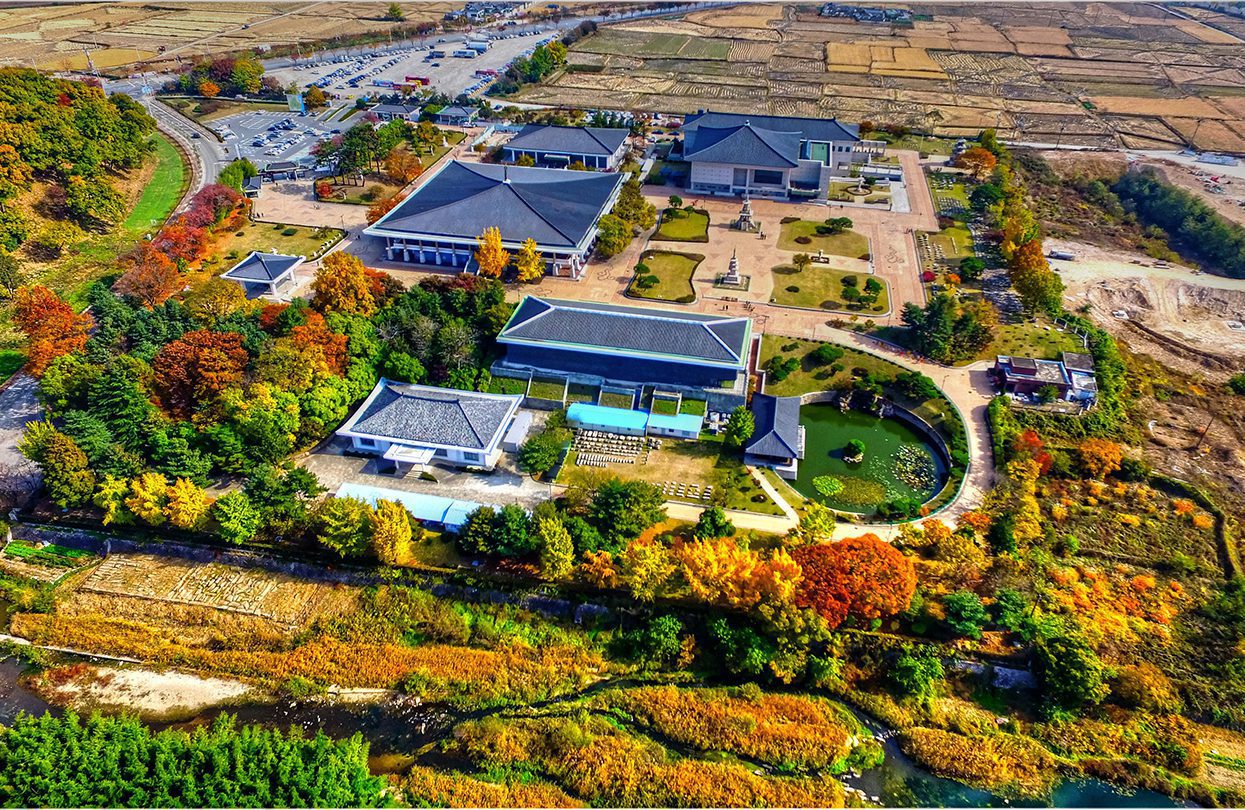
National Gyeongju Museum, By BUSAN DRONE
Charming Cultural Stop – Gyeongju
Often referred to as the ‘museum without walls’, Gyeongju takes visitors on a ride through the centuries, back to a time of imperial palaces and the puissant Silla Kingdom. This ancient capital rests at the foot of the Yeongnam Alps, only 30 kilometres north of the Ulsan metropolis. To get a deeper understanding of Gyeongju’s prosperous past, the Daereungwon Tombs are a great place to start. At first glance, the grass-covered, dome-shaped mounds seem odd, but deep underneath, kings and queens from the Silla era are buried.
Relive ancient times in the traditional Hanok Village, where timber houses and rooftops with a mountain silhouette are reminiscent of authentic Gyeongju, while many tea houses and cafes provide a welcome break. The cosy culinary delights blend well with the ancient vibes of the town.
Dusk invites a relaxing stroll, passing by the 7th-century astronomical observing tower Cheomseongdae, an architectural wonder. Further, the Woljeong Bridge has been beautifully rebuilt according to deep-rooted research, after its earlier devastation.
Some of the sights in Gyeongju shine on UNESCO’s World Heritage List, including the Bulguksa Temple. This religious relic is of great significance and historical value for Korean Buddhism.
Climb up to Mount Tohamsan over meandering trails through dense forests, and the sacred site unfolds naturally as an oasis of serenity. The path is accessible year-round, but the gorgeous glow of autumn leaves enhances the experience even more during this vivid season. Gyeongju is accessible by train and bus, both taking less than 4 hours from Seoul.
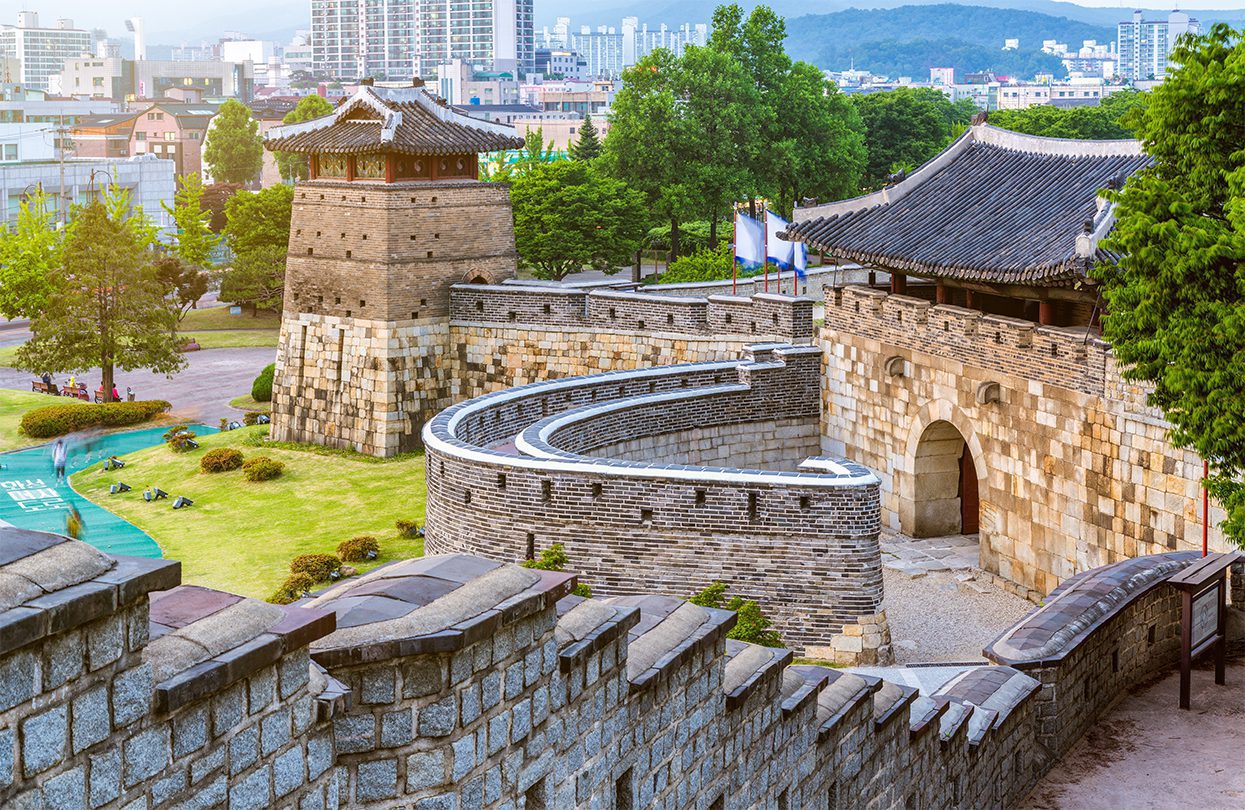
Hwaseong, a fortress of the Joseon dynasty that surrounds the centre of Suwon city, By FenlioQ
Folklore Brought To Life – Suwon
In Suwon, recent expansion meets a historic core, dotted with century-old fortifications, palaces, and royal tombs with deep roots in South Korea’s past. Turn the pages of Suwon’s history book back while wandering along the cobbled walls of Hwaseong Fortress. Completed in 1796 and later listed as a World Heritage Site by UNESCO, this historic stronghold is the crown jewel of the city’s cultural displays.
Hop in a cab, leave the momentous middle point of Suwon behind, and journey to the Korean Folk Village. Plays bring the culture, fashion, and arts from the Joseon Dynasty to life through musical performances and martial arts. Before heading back to Suwon proper, snack on traditional Korean treats like rice cakes and green onion pancakes.
Seize the opportunity to walk in the steps of ancient soldiers, by participating in an archery lesson within the robust walls of Hwaseong Fortress. Knowledgeable guides point out the principles of Gukgung, or authentic Korean archery. Afterwards, test your skills with your own bow and arrow. Suwon lies just south of Seoul, making for an easy taxi ride that costs approximately US$30.
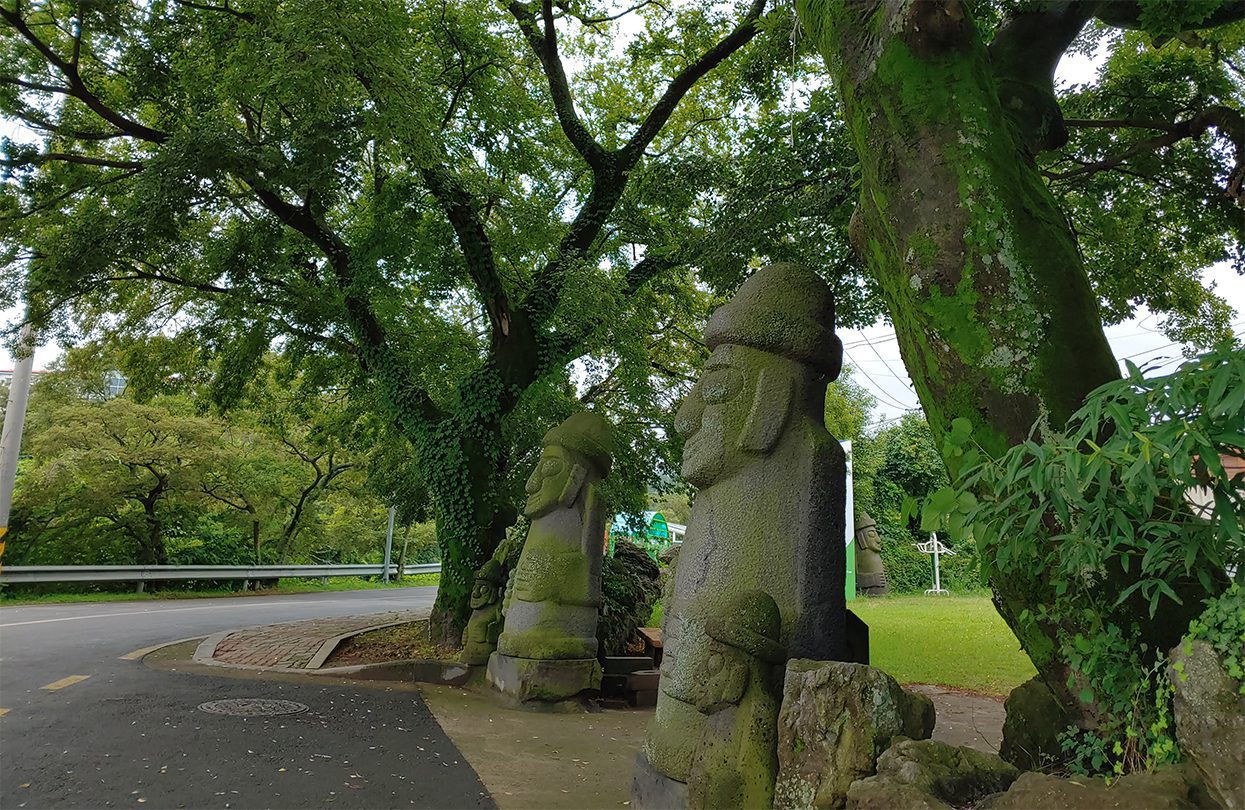
Jeju Island Dolhaubang, By Jejutteul
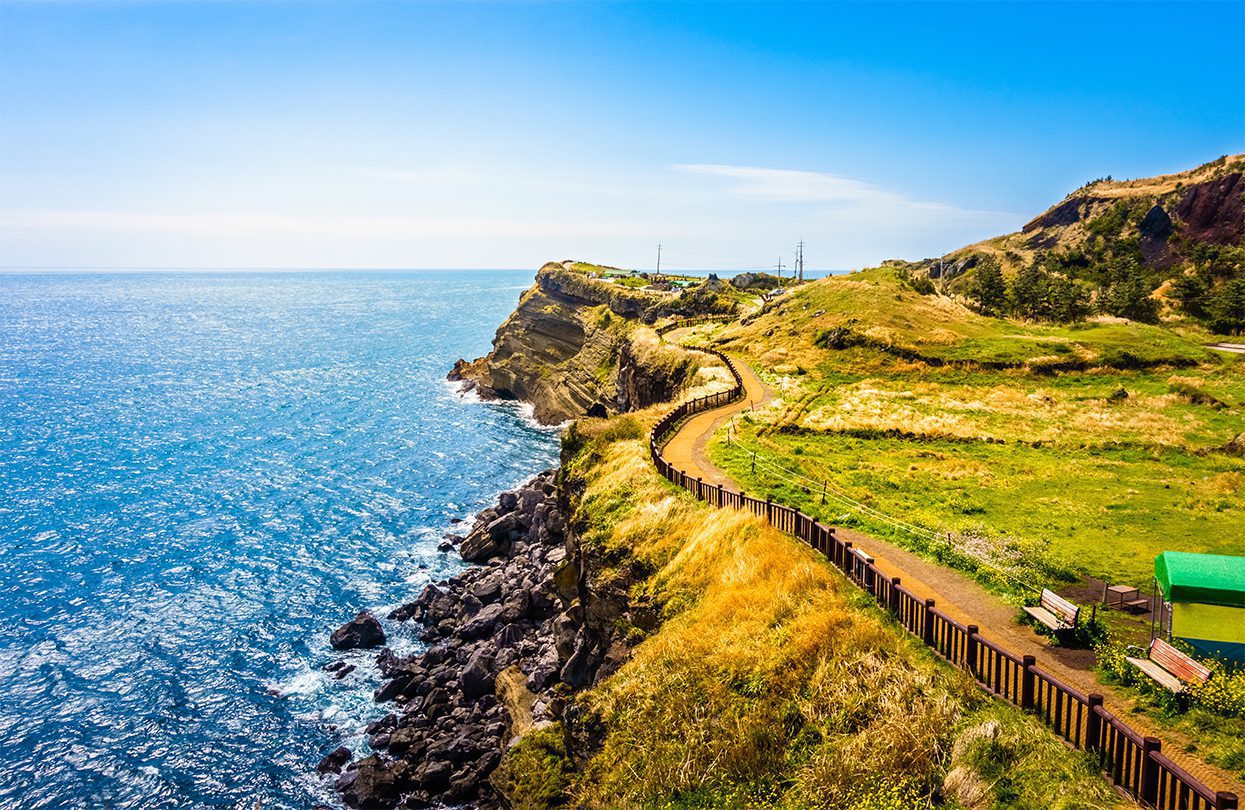
Gorgeous coastal walkway near Songaksan Mountain by Yunsun Kim, By Yunsun_Kim
A Road Trip In A Convertible – Jeju Island
Few Korean destinations can rival the exciting scenery on Jeju Island – a volcanic archipelago off the southern mainland of South Korea. Hit the road in a convertible and enjoy exceptional views of hilly farmland, mountainous volcanic rock, and beach-dotted bays along the island’s long coastline. Let your hair down and wave in the breeze to the rhythms of the sea, as you drive through the mountainous interior of Jeju. Be sure to stop at a large rock formation on the Southeast coast. SeongsanIlchulbong, or Sunrise Rock, is the extraordinary remains of a former mountain blown to dust during a volcanic eruption. Ascend the cone via a stairway, or enjoy the scenery from a more leisurely angle with a private boat tour that departs from the beach. As you sail, the captain manoeuvres between fierce ladies, who dive for shellfish without oxygen tanks. The rocky walls of SeongsanIlchulbong, on the other side, shines in all their majestic glory.
Peacefully contemplate the dramatic landscapes as you indulge in a spa treatment at the Guerlain Spa in The ShillaJeju. Here, wellness experts knead and massage your body to a sacramental state of satisfaction.
Before returning your convertible, say goodbye to Korea’s favourite island from the sky, with a drive over to Air Charter Cheju for a helicopter ride you will never forget. A birds-eye view from the chopper is a jaw-dropping experience even the most seasoned explorer will write home about; exhausted volcanic cones, extensive woodlands, and the entire egg-shaped Jeju Island are visible from your comfortable seat, which floats between heaven and an earthly Korean dreamland. Several airlines operate many daily flights between Seoul Gimpo and Jeju Airport. The flight time is 1 hour. ◼
Subscribe to the latest edition now by clicking here.
© This article was first published in Aug-Sept 2019 edition of World Travel Magazine.

